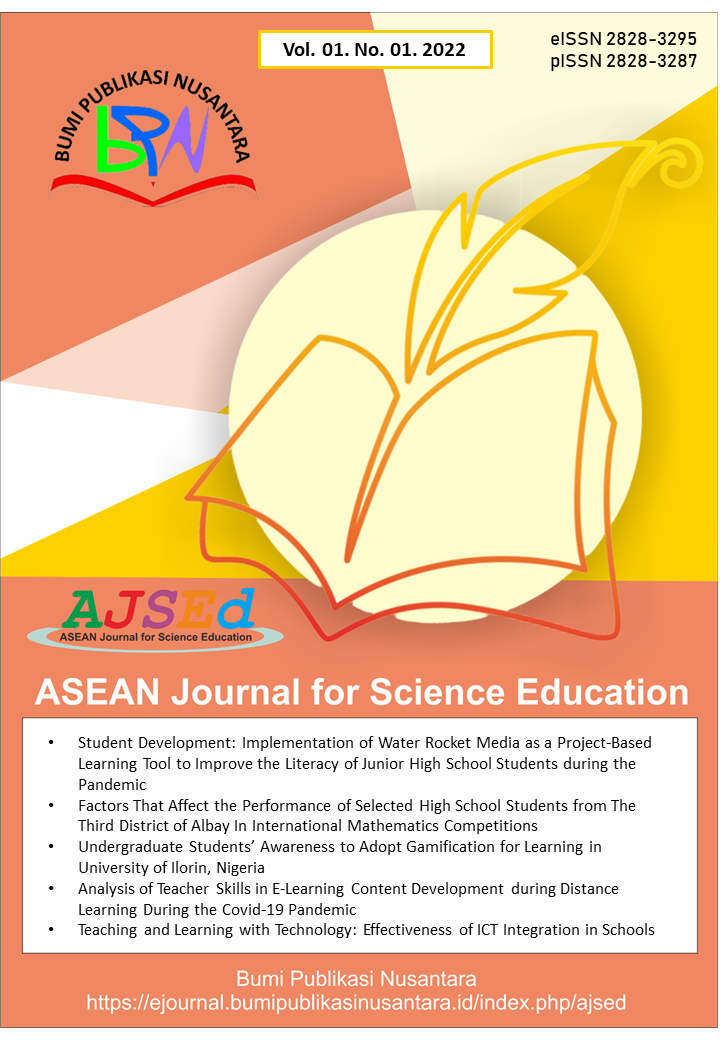Quantitative Analysis of The Problems and Prospects of The Nigerian Industrial Sector in the 21st Century
 ),
),
(1) Umaru Musa Yaradua University Katsina
 Corresponding Author
Corresponding Author
Abstract
Keywords
References
Abdul-Karim, N. A. H., and Ahmad, S. (2012). Human capital and the development of manufacturing sector in Malaysia. OIDA International Journal of Sustainable Development, 4(4), 105-114.
Adegbami, A. (2013). Insecurity: A Threat to human existence and economic development. Public Policy and Administration Research, 3(6), 8-13.
Adekunle, O., and Akinwale, S. (2019). Industrial policy and industrial sector productivity in Nigeria. Financial Markets, Institutions and Risks, 3(2), 44-51.
Adofu, I., and Okwanya, I. (2017). Linkages between trade openness, productivity and industrialization in Nigeria: A co-integration test. Research in World Economy, 8(2), 78-87.
Ayinde, T. O. (2014). The impact of exchange rate on manufacturing performance: new evidence from Nigeria. Fountain Journal of Management and Socials Sciences, 3(2), 321-351.
Bakare, A., and Fawehinmi, F. (2011). Trade openness and its impact on Nigeria’s non- oil industrialsector. Economics and Finance Review, 1(5), 57-65.
Devarajan, S., Swaroop, V., and Zou, H. F. (1996). The composition of public expenditure and economic growth. Journal of Monetary Economics, 37(2), 313-344.
Dutta, D., and Ahmed, N. (2004). Trade liberalization and industrial growth in Pakistan: a cointegration analysis. Applied Economics, 36(13), 1421-1429.
Eggoh, J., Houeninvo, H., and Sossou, A. (2015). Education, health and economic growth in African. Journal of Economic Development, 40(1), 93-111.
Ekpo, U. N. (2014). Nigeria industrial policies and industrial sector performance: Analytical exploration. IOSR Journal of Economics and Finance, 3(4), 1-11.
Engle, R. F., and Granger, C. W. (1987). Co-integration and error correction: representation, estimation, and testing. Econometrical: Journal of the Econometric Society, 251-276.
Ewetan, O. O., and Urhie, E. (2014). Insecurity and socio-economic development in Nigeria. Journal of sustainable development studies, 5(1), 40-63.
Farayibi, A. O., and Onodje, A. M. (2020). Determinants of manufacturing growth in Nigeria. Journal of Economics and Finance, 11(4), 36-44.
Gebrehiwot, K. G. (2016). the impact of human capital development on economic growth in Ethiopia: Evidence from ARDL approach to co-integration. Bahir Dar journal of education, 16(1), 34-55.
Gideaon, O., Gabriel, A. A., and Oladipo, A. O. (2015). Banking sector reforms and output growth of manufacturing sector in Nigeria. Journal of Economics and International Finance, 7(8), 183-191.
Iwuagwu, O. (2009). Nigeria and the challenge of industrial development: The new cluster strategy. African Economic History, 37(1), 151-180.
Johansen, S., and Juselius, K. (1990). Maximum likelihood estimation and inference on cointegration—with appucations to the demand for money. Oxford Bulletin of Economics and statistics, 52(2), 169-210.
Kenny S, V. (2019). Determinants of manufacturing sector performance and its contribution to gross domestic product in Nigeria. MPRA Paper, 93293, 1-19.
Kniivilä, M. (2007). Industrial development and economic growth: Implications for poverty reduction and income inequality. Industrial Development for the 21st Century: Sustainable Development Perspectives, 1(3), 295-333.
Maroof, Z., Hussain, S., Jawad, M., and Naz, M. (2019). Determinants of industrial development: a panel analysis of South Asian economies. Quality and Quantity, 53(3), 1391-1419.
Maryam, A., and Bassey, E. M. (2018). Evaluation of the Nigerian industrial sector and economic growth in the face of sustainable development goals. International Journal of Advanced Research in Public Policy, Social Development and Enterprise Studies, 3(1), 49-59.
Okoye, L., Nwakoboy, E., and Okorie, C. (2016). Deregulating the Nigerian economy for enhanced real sector growth. Journal of Policy and Development Studies, 10(2), 144-158.
Onakoya, A. B. (2018). Macroeconomic dynamics and the industrial output in Nigeria. Mediterranean Journal of Social Sciences, 9(2), 43–54.
Onakoya, A., Fasanya, I., and Babalola, M. (2012). Trade openness and manufacturing sector growth: An empirical analysis for Nigeria. Mediterranean Journal of Social Sciences, 3(11), 637-646.
Pesaran, M. H., Shin, Y., and Smith, R. J. (2000). Structural analysis of vector error correction models with exogenous I (1) variables. Journal of Econometrics, 97(2), 293-343.
Romer, P. M. (1986). Increasing returns and long-run growth. Journal of political economy, 94(5), 1002-1037.
Samouel, B., and Aram, B. (2016). The determinants of industrialization: Empirical evidence for Africa. European Scientific Journal, 12(10), 219-239.
Sokunle, R. O., Chase, J. M., and Harper, A. (2017). The determinants of manufacturing sector growth in Sub-Saharan African countries. Research in Business and Economics Journal, 12, 1-12.
Solow, R. M. (1956). A contribution to the theory of economic growth. The Quarterly Journal of Economics, 70(1), 65-94.
Swan, T. W. (1956). Economic growth and capital accumulation. Economic Record, 32(2), 334-361.
Tawose, J. O. B. (2012). Effects of bank credit on industrial performance in Nigeria. International Business and Management, 4(2), 158-168.
Udoh, E., and Ogbuagu, U. R. (2012). Financial sector development and industrial production in Nigeria (1970-2009): An ARDL cointegration approach. Journal of Applied Finance and Banking, 2(4), 49.
Article Metrics
Abstract View : 1145 times
: 1145 times Download : 589 times
Download : 589 times
Refbacks
- There are currently no refbacks.
Copyright (c) 2022 Bumi Publikasi Nusantara

This work is licensed under a Creative Commons Attribution-ShareAlike 4.0 International License.







